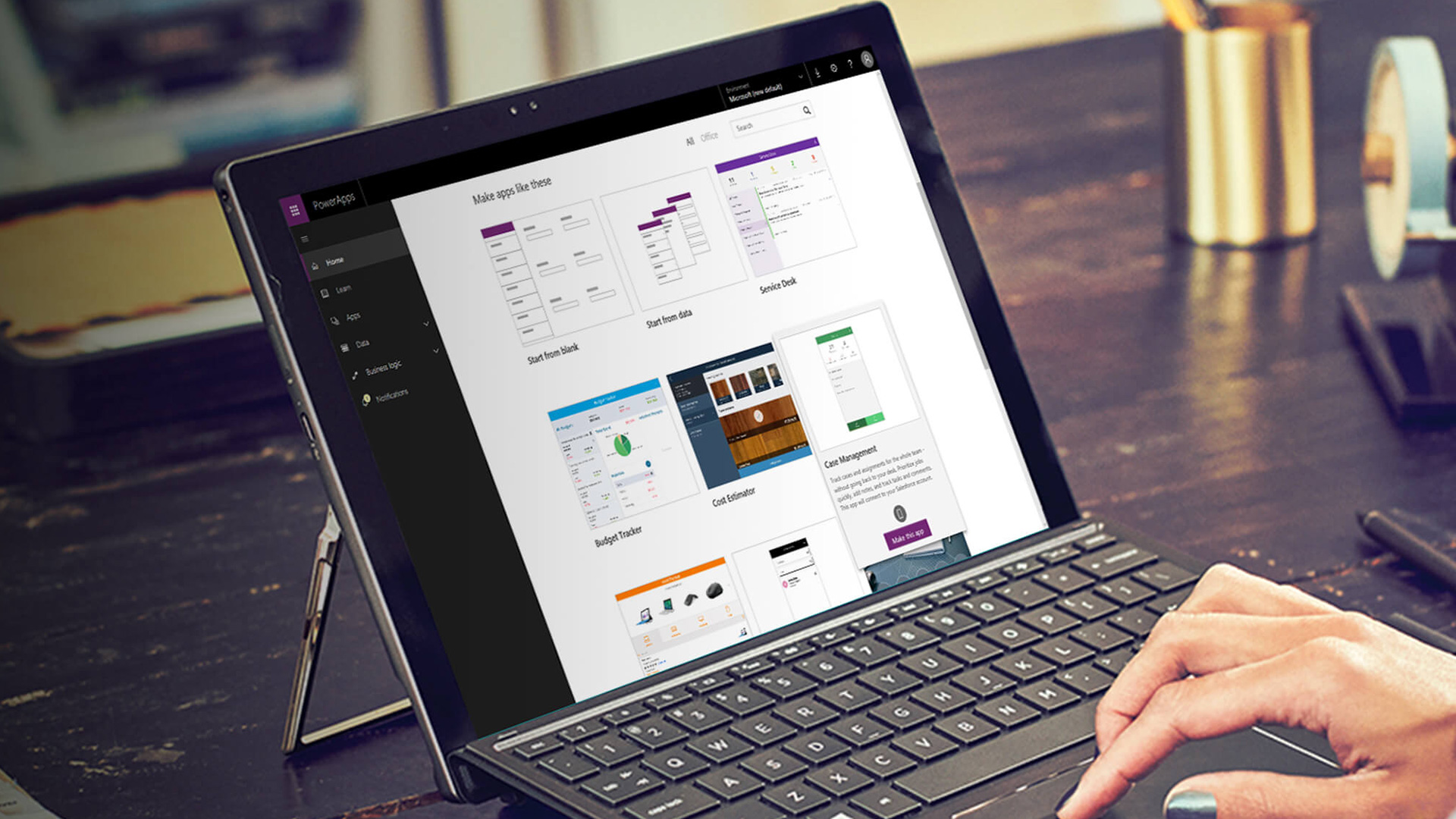3 Ways to Ensure Data Security in Schools
Schools
Keep your staff and student data protected
The excerpt will automatically add to here. Do not edit this block.
While technology enhances learning experiences for both teachers and students, keeping it secure can be challenging. As cyber threats become more sophisticated, schools must be looking at methods to keep their IT and their staff and student data protected.

With 81% of students using desktops, laptops or tablets at least once per week in school 1, schools need robust infrastructure supported by comprehensive security strategies.
From educating students and staff on how to identify a cyber threat to implementing effective DR policies, there are several ways that you can ensure the security of your school’s data.
Endpoint Security
Protecting endpoints like computers, tablets and smartphones are critical to combating threats. Teaching students about security awareness and how to spot ransomware when accessing websites is a way that you can stay ahead. Implementing endpoint management services with remote monitoring and preventative maintenance can also ensure that your school is protected from every angle.
DR 3-2-1 Backup
Data is one of your school’s biggest assets that’s why having an efficient backup and recovery strategy is essential. A 3-2-1 backup rule is recommended by backing up 3 copies of data, 2 types of media and at 1 different location. Following this process using a combination of backup storage solutions can effectively secure your school’s data and provide peace of mind across your IT environment.
Network Security
Your school’s network is the backbone of the learning experience, it always needs to be accessible for students and staff. Looking at your networking holistically allows your school to identify gaps and implement a strategic plan. Configuring your network to ensure that you have visibility across device usage can help keep your data safe. Monitoring outgoing traffic and setting up security alerts can also help combat a potential attack before it occurs.
At Cyclone, we can help schools integrate comprehensive security strategies across their IT environment with HP devices and Intel®. With over 60 specialist staff, our managed services team can provide solutions that facilitate learning outcomes and goals. If you’re interested in learning more about data security, don’t hesitate to get in contact with a friendly Cyclone representative today.
1 Why schools need to ramp up their cybersecurity measures, Jon McGettigan, Future Five New Zealand 2017.

Intel and the Intel logo are trademarks of Intel Corporation or its subsidiaries in the U.S. and/or other countries.
Subscribe to our newsletter
Subscribe to Cyclone news to keep up to date with new technology, current trends and future thinking.
search articles
7 Ways Teachers Can Leverage VR in the Classroom
Schools
Leverage VR in your classroom
The excerpt will automatically add to here. Do not edit this block.
65% of students in today’s classrooms will work in jobs that don’t exist yet. With that in mind, forward-thinking educators are recognising the value in using emerging technology like virtual reality to provide an immersive learning experience and prepare students for the future.

When used in a classroom setting as an instructional tool supplementary to conventional education, VR supports more holistic learning and enables children to immerse themselves in the learning process.
Although it has yet to reach its full potential, there are already a number of real-world use cases for virtual reality – and education is one of the most promising. Here are some of the way’s VR is being used in the classroom to improve the learning experience and learning outcomes.
1. To learn about science and the world
When it comes to learning about the universe, the body and scientific phenomena, virtual reality can offer students the chance to explore new and often complicated concepts in an immersive setting.
2. To go on a virtual excursion
Simulations, interactive games and visual representations of data are great tools to help students understand everything from the fundamentals of science to the building blocks of the body and the structure of the solar system.
Whether it’s to explore lost civilisations, other cultures or famous geographical landmarks, virtual reality allows students to “travel” to places from past and present. In the same vein, VR can be used to take “tours” of museums all over the globe. The possibilities for VR school excursions are virtually endless and, when supplemented with educational resources, offer an excellent learning opportunity while keeping students engaged.
3. To learn about history
Imagine stepping onto the moon with Neil Armstrong or watching as the Berlin Wall crumbles before your eyes. Virtual reality is an ideal medium for giving students a taste of history in a way that’s infinitely more memorable than reading about it on paper.
4. To experience different careers
For older students, virtual reality can be used to spend a day in the life of a surgeon, engineer, firefighter, musician or any other professional field to get a first-hand insight into what a career in that industry would look like.
5. To explore literature
VR technology gives teachers new ways to teach students about important works of literature in a way that’s compelling and easy to digest. For example, virtual environments can be crafted to recreate key scenes from a famous novel, and entire works of fiction can be recreated as an interactive gaming experience using technologies like the HP Mixed Reality Headset.
6. To enhance distance learning
VR has huge potential for remote students by enabling real-time collaboration and feedback between student and teachers. Conferencing applications can be used to deliver lectures, while students can interact and share ideas in a virtual environment.
7. To assist students with special needs
Virtual reality can be utilised as an assistive technology for students with learning disabilities by providing a virtual environment in which students can safely practise real-world skills. For example, students can do activities and take trips to places that they may not ordinarily be able to take part in due to accessibility concerns or other issues.
Interested to learn more about the potential for virtual reality in the classroom with HP devices and Intel®? Get in touch with a Cyclone expert.

Intel and the Intel logo are trademarks of Intel Corporation or its subsidiaries in the U.S. and/or other countries.
Subscribe to our newsletter
Subscribe to Cyclone news to keep up to date with new technology, current trends and future thinking.
search articles
Search
Recent Posts
- The Impact of Generative AI in New Zealand Schools
- eduTech 22. Reflections from a fantastic few days.
- Minecraft in the Classroom
- Cyclone Computers Wins 73.3M Deal
- A tale of two lockdowns
- Not if, but when. Ransomware on the rise.
- It’s ugly out there, people. Good security starts with you.
- Our Top 6 Security Recommendations
- Protecting Your Organisations Data
- Top Three Cyberthreats For NZ Organisations
- A-Z of Classroom Technology for 2020
- 3 Ways to Ensure Data Security in Schools
- 7 Ways Teachers Can Leverage VR in the Classroom
- Mobile Device Managers
- Microsoft Power Apps
Mobile Device Managers
Schools
Q&A with mobile device managers
The excerpt will automatically add to here. Do not edit this block.
Mobile devices are great tools for the classroom, providing students with new ways to learn. Although effective in many aspects, making sure they are used productively can be a challenge, with students being able to access websites unrelated to what’s being taught.

Deploying a Mobile Device Management (MDM) solution is one way your school can ensure devices are being used efficiently and safely.
At Cyclone, we’ve put together a Q&A so you can get a better understanding of MDM and the benefits it can provide to your school.
What is MDM?
Mobile Device Management (MDM) is deployable software that allows IT administrators to monitor, control and enforce policies across devices such as smartphones, tablets and other devices. As a core component of mobility management, it provides security assurance, flexibility and lower equipment costs for schools.
Is it just for school owned devices or also for BYOD devices?
MDM can be deployed across both school-owned and BYOD devices. Depending on a school’s needs/device fleet, an MDM solution can be customised to meet specific educational outcomes. Simplicity is key when approaching MDM platforms which is why it’s important to align your selection to your school’s overall IT strategy.
Why do schools want it?
There are many reasons a school may want to leverage MDM. From the capability to manage devices remotely to delivering the right applications/digital content to the student’s device. With ‘bring your own device’ (BYOD) an emerging trend, MDM also provides greater security and protection of data and IT infrastructure.
Why should schools deploy it?
While mobile devices allow schools to expand the classroom/ learning context, they also give students more opportunities to access inappropriate online content and expand the number of potential network vulnerabilities 1. Deploying MDM gives security assurance across a school’s device fleet while supporting mobility in student learning. Alongside this, IT leaders and teachers get autonomy over what kinds of applications get used within classrooms.
What are the potential advantages of MDM?
- Greater autonomy with a full suite of management tools and applications
- The ability for a school to “push out” content and applications to student devices
- Significantly reduced device deployment and updates time for school administrators
- Ability to focus student attention to single application
- Ability to lock the device in a classroom environment
- Ability to share work between groups of student screens
- Monitoring and reporting functions across a device fleet
- Remote management capabilities with power to disable or remove unauthorised applications and users.
Can teachers leverage MDM tools or is it solely an IT admin function?
MDM systems can be tailored for teachers to use as a tool in the classroom. Educators can utilise MDM attributes to limit access to specific applications, secure testing environments and smoothly transition from one activity to another.
Navigating what device management solution is right for you can be challenging. At Cyclone, we’re proud to partner with HP Intel® to deliver comprehensive IT managed services and solutions. If you’re interested in MDM and want to learn more, don’t hesitate to contact one of our friendly staff today.

1 K–12 Schools Need Strong Mobile Device Management Services, 2019, Eli Zimmerman, EdTech, https://edtechmagazine.com/k12/article/2019/10/k-12-schools-need-strong-mobile-device-management-services-perfcon
Talk to us today to help with the solutions that are right for your business.
Our office hours are 8.30am to 5pm Monday to Friday. Give us a call on 0800 686 686 or email us with the form below.
Microsoft Power Apps
Schools
Build your own App!
The excerpt will automatically add to here. Do not edit this block.
What you can learn:
- Learn and develop your Power Apps and Power Automate skills
- Explore and create in a full-featured environment for development
- Build apps on a single, extensible view of your data with the Common Data Service
Talk to us today to help with the solutions that are right for your business.
Our office hours are 8.30am to 5pm Monday to Friday. Give us a call on 0800 686 686 or email us with the form below.
Recent Posts
- The Impact of Generative AI in New Zealand Schools
- eduTech 22. Reflections from a fantastic few days.
- Minecraft in the Classroom
- Cyclone Computers Wins 73.3M Deal
- A tale of two lockdowns
- Not if, but when. Ransomware on the rise.
- It’s ugly out there, people. Good security starts with you.
- Our Top 6 Security Recommendations
- Protecting Your Organisations Data
- Top Three Cyberthreats For NZ Organisations
- A-Z of Classroom Technology for 2020
- 3 Ways to Ensure Data Security in Schools
- 7 Ways Teachers Can Leverage VR in the Classroom
- Mobile Device Managers
- Microsoft Power Apps
- 1
- 2


